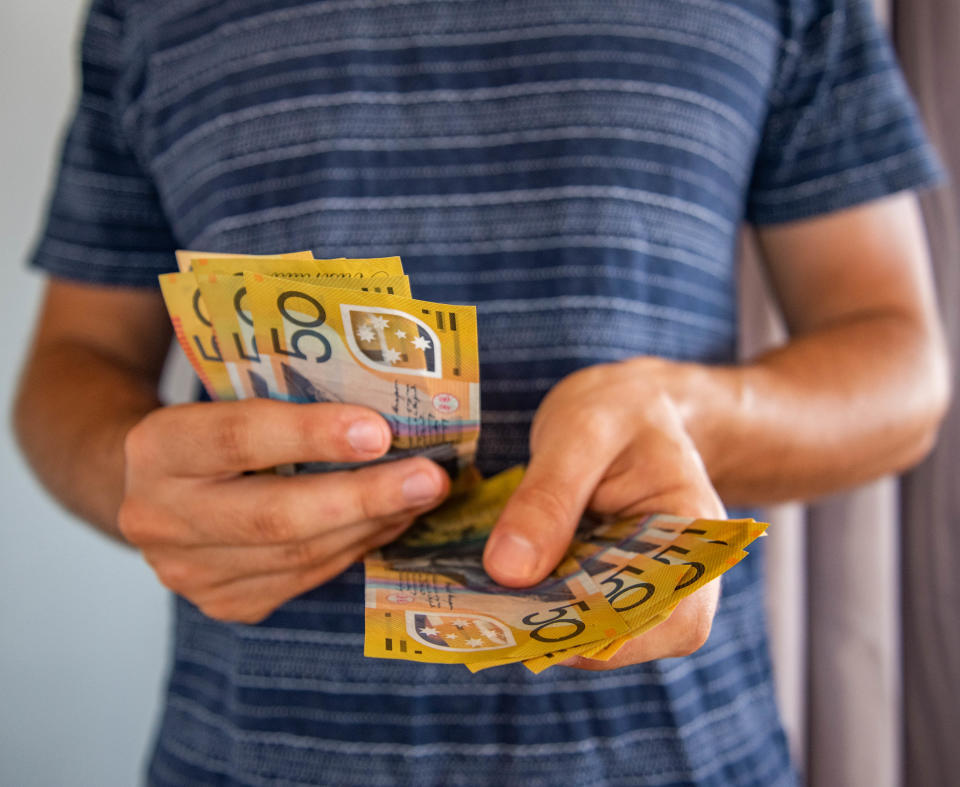What Australia's 'historic' savings rate means for the recovery

Australia’s household savings rate has hit a historic high as fewer purchasing opportunities combine with recession anxiety for some and an unexpected windfall for others, presenting a knotty question for the Federal Government ahead of the October budget.
New IBISWorld research shows the household savings rate as a share of gross disposable income jumped from 2.7 per cent in 2019-20 to 7.9 per cent currently, with mortgage deferrals and rent relief driving this jump in savings, senior analyst Matthew Reeves said.
Also read: Behind the 4 forces that move Aussie house prices
Also read: RBA to cut rates within weeks: Westpac
Also read: 2020: The year the Federal Budget blows up
Similarly, the $50 billion JobKeeper and JobSeeker schemes saw many Australians’ income actually increase, with real household disposable income growing at its fastest rate since 2010-11.
At the same time, recreation and culture spending has slumped 15.7 per cent, along with health spending which slid 20.2 per cent.
However, while the JobKeeper, JobSeeker and rent and mortgage schemes are new, as is the Covid-19 recession, consumer spending had been struggling even before the pandemic.
“The Covid-19 pandemic exacerbated an already weak trend in spending, which had been slowing for some time. Household consumption rose only 0.1 per cent in the September quarter of 2019, which up until that point was the worst performing quarter since the height of the GFC,” Reeves said.
Speaking at the Yahoo Finance All Markets Summit, former prime minister Kevin Rudd said this weak spending and high savings is what gives many economists and politicians “greatest cause for concern”.
“One of the problems of going into recession is that it’s not just an objective fact,” Rudd said.
“One of the reasons I was so determined to avoid going into recession during the Global Financial Crisis was its impact on consumer confidence and the nation’s psychology more broadly.”
Why is a high savings rate a mixed blessing?

AMP senior economist Diana Mousina calculates the average household income has seen a $5,000 boost thanks to support like early access to super, mortgage deferrals and free childcare.
While poor consumer confidence and spending can pose an issue, Mousina said there isn’t anything necessarily wrong with having a high savings rate.
“While there may be some risk aversion in the short term consumption, in the longer term it’s good to smooth out weakness in income which could potentially come, which I think is a big risk still in Australia because the labour market will remain weak for some time,” Mousina told Yahoo Finance.
“The JobSeeker and JobKeeper tiers have been lowered, so you need to see some smoothing in consumption.”
She added that while high savings rates normally indicate a relative reduction in spending, the 2020 recession is different in that the savings rate is partially due to the stimulus boosts.
Reserve Bank of Australia deputy governor Guy Debelle described the rising incomes during the recession as “quite a remarkable and highly unusual outcome”, noting that normally in recessions, household income falls.
“The fact that household income rose in the quarter does not mean that the stimulus was overdone. Absent the stimulus, the decline in GDP and employment would have been significantly larger and there would have been much greater financial hardship,” Debelle said.
“That households saved a large amount of this income support means that their balance sheets are in a considerably better place than would normally be the case in a recession. They are better placed to support the recovery as it unfolds.
“The transfer from the strong balance sheet of the government to bolster the balance sheet of the household sector is an entirely appropriate and timely policy response.”
The question going forward is how spending will change once restrictions are lifted.
Mousina said tracking consumer confidence can be tricky, noting that since the pandemic struck, it has already returned to pre-Covid levels. The problem is, consumer confidence was already weak due to years of stagnating wage growth.
“The other thing is, consumer confidence doesn’t really give you the best forward-looking guide to retail spending. In confidence surveys, we don’t tend to be that optimistic.”
IBISWorld predicts it will take at least three years for the household savings rate to fall, with consumers likely to spend “cautiously”, as they did following the Global financial Crisis.
“Household spending is expected to recover, provided that no significant new waves of infections are reported across the country. As the local economy continues to open up, especially in Victoria, the savings rate is likely to drop from the highs seen in the June quarter,” the researchers said.
“Consumer spending patterns will be driven by the lasting effects of the virus, which are expected to remain until a successful vaccine is produced.”
Make your money work with Yahoo Finance’s daily newsletter. Sign up here and stay on top of the latest money, news and tech news.
Follow Yahoo Finance Australia on Facebook, Twitter, Instagram and LinkedIn.



